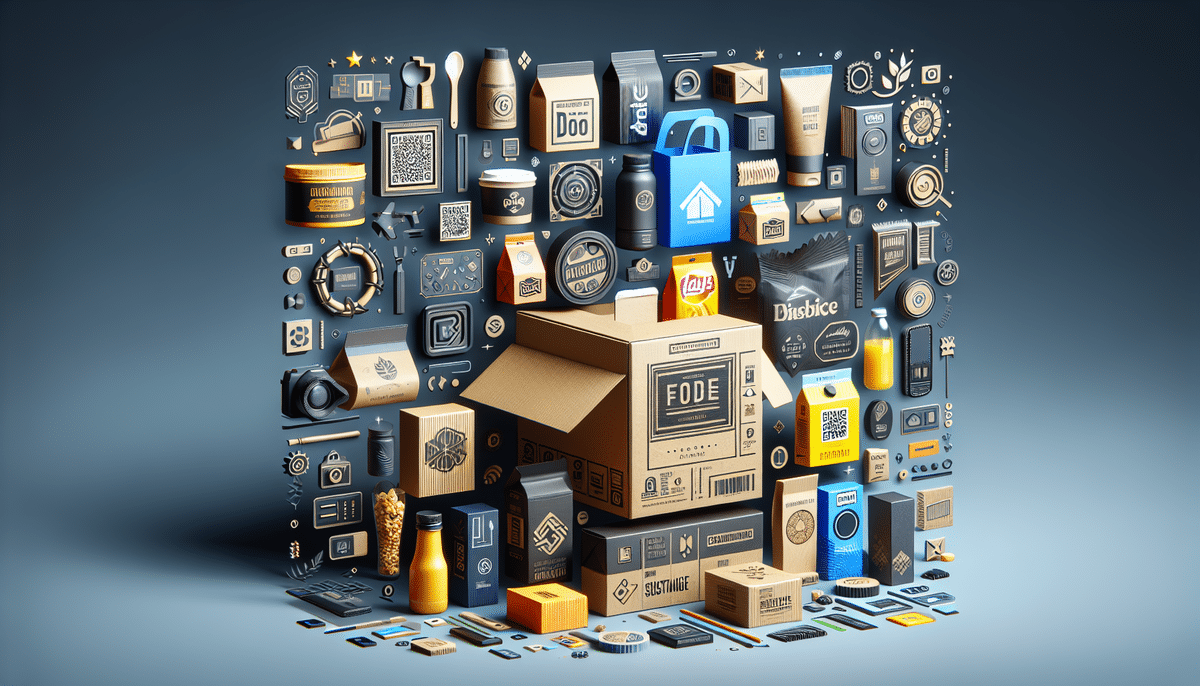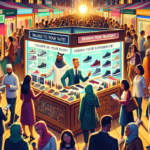The Art of Packaging Design: Creating Eye-Catching and Effective Packaging
In today's competitive consumer market, packaging design is pivotal in attracting potential customers and driving sales. Crafting an eye-catching and effective package requires a deep understanding of the target audience, competitive landscape, and design psychology. This article delves into the essentials of packaging design, from audience research and competitive analysis to legal considerations and emerging trends for 2024 and beyond.
The Importance of Packaging Design in the Modern Market
Packaging design often serves as the first interaction between a customer and a product. A well-executed package can leave a lasting positive impression, encouraging purchases, while a poorly designed one can deter consumers and result in lost sales.
- Brand Differentiation: With the US retail packaging market valued at over $400 billion in 2023, distinguishing your product is essential. Unique packaging captures attention and enhances memorability.
- Communication of Brand Values: Effective packaging conveys key product information—such as ingredients, benefits, and usage—while reflecting the brand's personality and core values, fostering a deeper connection with consumers.
Understanding the Psychology Behind Packaging Design
Design psychology significantly influences consumer perception. A successful package appeals to emotions, fosters positive brand associations, and conveys critical product information clearly.
Color Psychology
Colors evoke specific emotions and associations. For instance:
- Blue: Trust and reliability.
- Red: Urgency and excitement.
Designers must select colors that align with the desired emotional response of the target audience.
Layout and Imagery
The placement of text and images impacts perception and purchasing decisions. A balanced and visually appealing layout enhances readability and attracts attention.
Researching Your Target Audience
Effective packaging design begins with comprehensive audience research, understanding their buying habits, preferences, and values.
Demographics and Preferences
Different age groups exhibit varying packaging preferences. For example:
- Younger Consumers: Prefer bold, colorful designs.
- Older Consumers: Favor classic and traditional aesthetics.
Tailoring designs to these preferences enhances appeal and relevance.
Behavioral Insights
Analyzing consumer behavior helps in designing packages that meet functional needs, such as ease of use and portability.
Competitive Analysis: Standing Out on the Shelf
Understanding competitors' packaging strategies enables differentiation and strategic positioning.
Color and Design Trends
Assessing competitors' use of color and design elements can inform your own choices to stand out while maintaining brand alignment.
Strengths and Weaknesses
Identifying what works and what doesn't in competitors' packaging helps in refining your design for better market fit.
Choosing the Right Color Scheme and Typography
The choice of colors and fonts plays a crucial role in brand perception and consumer engagement.
Color Scheme Selection
Select colors that align with your brand's message and evoke the desired emotional response. For instance, green often signifies sustainability and health.
Typography Considerations
- Sans-Serif Fonts: Modern and clean appearance.
- Serif Fonts: Traditional and classic feel.
Ensure readability and visibility, especially on crowded shelves.
Integrating Brand Identity into Packaging Design
Your packaging should be a cohesive extension of your brand identity, reflecting your brand message, personality, and values.
Consistency in Branding
Use consistent colors, fonts, and imagery that align with your brand guidelines to enhance recognition and trust.
Unique Brand Elements
Incorporate custom illustrations or patterns that embody your brand's uniqueness, making your package memorable.
Innovative Packaging Materials and Shapes
Utilizing unique materials and shapes can significantly enhance shelf presence and consumer interest.
Sustainable Materials
Adopting eco-friendly materials appeals to environmentally conscious consumers and aligns with sustainability trends.
Interactive Packaging
Features like QR codes or augmented reality experiences engage consumers and provide additional product information.
Effective Labeling and Graphics for Enhanced Visibility
Clear and attractive labeling is essential for conveying product information and attracting attention.
Essential Information
Ensure labels include necessary details such as product name, ingredients, and nutritional facts clearly and accurately.
High-Quality Graphics
Use high-resolution images and visually appealing graphics that are consistent with your brand image.
Durable and Eco-Friendly Materials
Choose packaging materials that protect the product and are sustainable, appealing to eco-conscious consumers.
Maximizing Functionality and Consumer Convenience
Beyond aesthetics, packaging must be functional and convenient, enhancing the overall consumer experience.
Ease of Use
Design packaging that is easy to open, resealable, and portable, catering to consumers' practical needs.
Accessibility Features
Incorporate elements like easy-open tabs or tear-away sections to make products accessible to a broader audience, including those with disabilities.
Creating a Memorable Unboxing Experience
The unboxing experience can significantly influence customer perceptions and brand loyalty.
Personalization and Surprises
Include personalized notes or surprise elements like small gifts to enhance the emotional connection and encourage social sharing.
Eco-Friendly Packaging
Utilize recyclable or biodegradable materials to align with sustainability values and appeal to environmentally conscious consumers.
Navigating Legal Requirements and Regulations
Compliance with legal standards ensures product safety and accurate labeling, maintaining consumer trust and avoiding penalties.
Regulatory Compliance
Stay informed about packaging regulations relevant to your industry and consult with legal professionals to ensure adherence.
Accurate Labeling
Ensure all required information is present and accurately presented to meet legal standards and inform consumers effectively.
Measuring Packaging Design Success
Assessing the effectiveness of your packaging design is crucial for continuous improvement and maximizing impact.
Sales Data Analysis
Track sales performance to determine if packaging changes correlate with increased sales.
Customer Feedback
Gather and analyze consumer feedback to identify strengths and areas for enhancement in your packaging design.
Future Trends in Packaging Design for 2024 and Beyond
The packaging design landscape is ever-evolving, with new trends shaping consumer preferences and industry standards.
Eco-Friendly and Sustainable Packaging
The shift towards sustainability continues, with consumers favoring brands that prioritize eco-friendly materials and practices.
Minimalist Design
Sleek, simple designs that emphasize functionality and clarity are gaining popularity, reflecting modern aesthetic preferences.
Personalized Packaging
Customization and personalization enhance consumer connection, making products feel unique and tailored to individual preferences.
Conclusion
Developing an eye-catching and effective packaging design demands thorough research, creative innovation, and meticulous attention to detail. By understanding design psychology, conducting audience and competitive analyses, integrating brand identity, and staying abreast of emerging trends, you can craft packaging that not only stands out on the shelf but also fosters strong brand loyalty and drives sales. Remember, your packaging is often the first interaction with your customer—make it memorable.




















